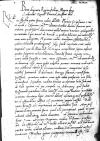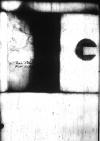Letter #765
Bona Sforza to Ioannes DANTISCUSCracow, 1532-03-22
Manuscript sources:
Prints:
| ||||||||||||||||||||
Text & apparatus & commentaryPlain textText & commentaryText & apparatus
[...] paper damaged⌈[...][...] paper damaged⌉ P paper damaged⌈[P]P paper damaged⌉atri, domino
Reverende in Christo Pater sincere nobis dilecte.
Pluries scripsimus S(trenuitati) or S(inceritati)⌈S(trenuitati)S(trenuitati) or S(inceritati)⌉
Tuae, ut apud sacram  BCz, 1596, p. 320
de
BCz, 1596, p. 320
de
Dat(ae) or Dat(um)⌈Dat(ae)Dat(ae) or Dat(um)⌉


